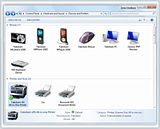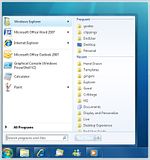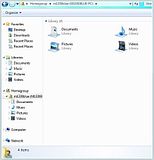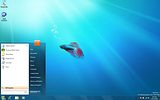Despite criticism that Windows Vista came in too many versions, Microsoft is moving ahead with plans to offer just as many editions of Windows 7.








Although the software maker will offer at least six distinct versions of the new operating system, Microsoft said to expect almost all PCs sold in the U.S. to come with either the Home Premium or Professional editions of the operating system.
"We're going to focus on two versions," Microsoft Senior Vice President Bill Veghte said in an interview, noting that those two versions will likely account for 80 percent of Windows 7 sales.
Still, versions of Windows 7 will include: Starter, Home Basic, Home Premium, Professional, and Ultimate. Unlike with Vista, however, the Home Basic version will be sold only in emerging markets.
So, if Microsoft is going to focus on two, why bother with all of the other versions? Veghte says it comes down to the fact that there are just so many places in which Windows is sold.
For emerging markets, for example, Microsoft needs to have lower-priced versions. As a result, Microsoft plans the severely limited Windows 7 Starter as well as the bare bones, but relatively full-featured home basic version. Volume license customers will be able to get an enterprise version that includes BitLocker encryption and a couple of other enterprise-only features. For consumers who really want access to those features, there will again be an Ultimate version of the operating system.
That's not to say Microsoft is doing everything the same with Windows 7. Veghte said that Microsoft learned some important lessons from Vista.
One specific criticism with the Vista packages was the fact that there were features in Home Premium that weren't in the pricier Vista Business edition. With Windows 7, each higher-priced version will be a superset of the other versions. For example, the Professional version of Windows 7 includes Windows Media Center.
Also, Microsoft will make it easier to move from one version to another. With Vista, Microsoft introduced the notion of being able to easily upgrade from one version to another, though a special upgrade disk was needed. Windows 7, despite its many versions, will actually come as a single piece of code, or image. That means all the features will come loaded onto a Windows 7 PC, ready to be unlocked with an upgrade product key.
As for the specific versions, Windows 7 Starter has some of the key features of WIndows 7, such as the new taskbar, but not the live thumbnail previews. It is also limited to three applications running at a time and will have limitations on the kinds of screen resolutions and processors it will support.
Home Basic, which will be sold only in emerging markets, removes the screen size, processor, and open application limits and adds support for Internet connection sharing and the new sensor and location-based features. However, Home Basic lacks such things as multitouch support or the Aero interface. DVD playback and Windows Media Center are also found in the Home Premium and Professional editions, but not in Basic or Starter.
The ability to use presentation mode or join a domain are two examples of features that are found in Windows 7 Professional, but not in any of the home versions. Finally, you'll need either Ultimate or Enterprise for a few features, such as DirectAccess, BitLocker, or booting from a virtual hard drive.
Regardless of the rationale, having so many versions of Windows 7--not to mention any additional versions mandated by antitrust regulators around the world--will certainly open Microsoft up to additional criticism and probably some mocking from the folks in Cupertino.
To some degree, the customization is necessary. After all, while Apple may boast of only having one version--it essentially targets only the high end of the consumer market--the segment served by Home Premium.
However, the need for an Ultimate version, particularly now that the Professional version will have Media Center and other consumer features, seems somewhat dubious

No comments:
Post a Comment